Wing Chun, also known as Ving Tsun or Wing Tsun, is a concept-based Chinese martial art and form of self-defense utilising both striking and grappling while specialising in real world, close-range combat. It is practiced globally in over 64 countries and is the world’s most popular form of Southern Kung Fu.
Wing Chun was made popular by Hong Kong based master Yip Man. He later taught the legendary movie actor Bruce Lee whose popularity spread the system world-wide. Mass emigration of Wing Chun practitioners throughout the world further ensured the spread of the system on a global scale.
History of Wing Chun
The earliest known mentions of Wing Chun date to the period of Red Boat Opera.
The common legend involves the young woman Yim Wing-chun, (Wing Chun literally means ‘forever springtime’ or ‘praising spring’,) at the time after the destruction of the Southern Shaolin Temple and its associated temples by the Qing government:
After Yim Wing-Chun rebuffed the local warlord’s marriage offer, she said she’d reconsider his proposal if he could beat her in a fight. She soon crossed paths with a Buddhist nun – Ng Mui, who was one of the Shaolin Sect survivors, and asked the nun to teach her fighting.
The legend goes that Ng Mui taught Yim Wing-Chun a new system of martial art that had been inspired by Ng Mui’s observations of a confrontation between a Snake and a Crane; this then-still nameless style enabled Yim Wing Chun to beat the warlord in a one-on-one fight. Yim Wing-Chun thereafter married Leung Bac-Chou and taught him the style, which was later named after her.
Since the system was developed during the Shaolin and Ming resistance to the Qing Dynasty, many legends about the creator of Wing Chun were spread to confuse enemies, including the story of Yim Wing Chun. This perhaps explains why no one has been able to accurately determine the creator or creators of Wing Chun.
Characteristics
Balance, structure and stance
Some Wing Chun practitioners believe that the person with better body structure will win. A correct Wing Chun stance is like a piece of bamboo, firm but flexible, rooted but yielding. This structure is used to either deflect external forces or redirect them.
Balance is related to structure because a well-balanced body recovers more quickly from stalled attacks and structure is maintained. Wing Chun trains the awareness of one’s own body movement derived from muscular, tendon, and articular sources. Performing Wing Chun’s forms such as Chum Kiu or the Wooden Dummy form greatly improve proprioception.
Wing Chun favours a high, narrow stance with the elbows kept close to the body. Within the stance, arms are positioned across the vitals of the centerline. Shifting or turning within a stance is carried out variantly on the heels, balls, or middle (K1 or Kidney 1 point) of the foot depending on lineage.
All attacks and counter-attacks are initiated from this firm, stable base. Wing Chun rarely compromises structure for more powerful attacks because this is believed to create defensive openings which may be exploited.
Structure is viewed as important, not only for reasons of defense, but also for attack. When the practitioner is effectively “rooted”, or aligned so as to be braced against the ground, the force of the hit is believed to be far more devastating. Additionally, the practice of “settling” one’s opponent to brace them more effectively against the ground aids in delivering as much force as possible to them.
Relaxation
Softness (via relaxation) and performing techniques in a relaxed manner, is fundamental to Wing Chun.
Tension reduces punching speed and power. Muscles act in pairs in opposition to each other (e.g. biceps and triceps). If the arm is tensed, maximum punching speed cannot be achieved as the biceps will be opposing the extension of the arm.
In Wing Chun, the arm should be relaxed before beginning the punching motion.
- Unnecessary muscle tension wastes energy and causes fatigue.
Tense, stiff arms are less fluid and sensitive during trapping and chi sao.
- A tense, stiff limb provides an easy handle for an opponent to push or pull with, whereas a relaxed limb provides an opponent less to work with.
- A relaxed, but focused, limb affords the ability to feel “holes” or weaknesses in the opponent’s structure (see Sensitivity section). With the correct forwarding these “holes” grant a path into attacking the opponent.
- Muscular struggle reduces a fight to who is stronger. Minimum brute strength in all movement becomes an equalizer in uneven strength confrontations.
This is very much in the spirit of the tale of Ng Mui.
Centerline
While the existence of a “central axis” concept is unified in Wing Chun, the interpretation of the centerline concept itself is not. Many variations exist, with some lineages defining anywhere from a single “centerline” to multiple lines of interaction and definition. Traditionally the centerline is considered to be the vertical axis from the top of a human’s head to the groin. The human body’s prime striking targets are considered to be on or near this line, including eyes, nose, throat, solar plexus, stomach, pelvis and groin.
Wing Chun techniques are generally “closed”, with the limbs drawn in to protect the central area and also to maintain balance. In most circumstances, the hands do not move beyond the vertical circle that is described by swinging the arms in front, with the hands crossed at the wrists.
To reach outside this area, footwork is used. A large emphasis and time investment in training Chi Sao exercise emphasizes positioning to dominate this centerline. The stance and guard all point at or through the center to concentrate physical and mental intent of the entire body to the one target.
Wing Chun practitioners attack within this central area to transmit force more effectively, since it targets the “core center” (or “mother line”, another center defined in some lineages and referring to the vertical axis of the human body where the center of gravity lies).
For example, striking an opponent’s shoulder will twist the body, dispelling some of the force and weakening the strike, as well as compromising the striker’s position. Striking closer to the center transmits more force directly into the body.
Punches
Due to the emphasis on the center line, the straight punch is the most common strike in Wing Chun. However, the principle of simultaneous attack and defense (Lin Sil Die Dar) suggests that all movements in the Siu Nim Tau with a forward execution flow into a strike if no effective resistance is met, without need for recomposure.
Other explicit examples of punches can be found in the Chum Kiu and Bil Jee forms, although these punches may appear to be superficially different they are simply the result of the punch beginning from a different origin position while following the same fundamental idea, to punch in a straight line following the shortest distance between the fist and the opponent.
The punch is the most basic and fundamental in Wing Chun and is usually thrown with the elbow down and in front of the body. Depending on the lineage, the fist is held anywhere from vertical to horizontal (palm side up). The contact points also vary from the top two knuckles, to the middle two knuckles, to the bottom three knuckles.
Other Punching Methods
In some lineages of Wing Chun, the fist is swiveled at the wrist on point of impact so that the bottom three knuckles are thrust forward adding power to the punch while it is at maximum extension.
The punches may be thrown in quick succession in a “straight blast” or “chain punching”. When executed correctly, it can be used as a disorienting finisher.
When executing the punch, you must relax and use your shoulders. The punch comes from the body and not the arm. Like most other punches in martial arts, Wing Chun punches with the body.
Wing Chun is often criticized for encouraging weaker punches that do not utilize the whole body[citation needed]. However, as per the formal name of the punch (which is translated as “The Sun-character Rushing Punch (or Hammer in Cantonese)”), a practitioner typically would thrust their full body weight towards their opponent, with the fist as the “nail”, and their body as the “hammer”. With each successive punch, the practitioner would step in closer and closer to the opponent, driving the fists forward as a hammer drives a nail.
Wing Chun favors the vertical punch for several reasons:
- Directness. The punch is not “loaded” by pulling the elbow behind the body. The punch travels straight towards the target from the guard position (hands are held in front of the chest).
- Protection. The elbow is kept low to cover the front midsection of the body. It is more difficult for an opponent to execute an elbow lock/break when the elbow occupies this position. This aids in generating power by use of the entire body structure rather than only the arm to strike. Also with the elbow down, it offers less opening for the body to be attacked while the forearm and punch intercept space towards the head and upper body.
- Strength and Impact. Wing Chun practitioners believe that because the elbow is behind the fist during the strike, it is thereby supported by the strength of the entire body rather than just a swinging fist, and therefore has more impact.
A common analogy is a baseball bat being swung at someone’s head (a round-house punch), as opposed to the butt end of the bat being thrust forward into the opponent’s face (wing chun punch), which would cause far more damage than a glancing hit and is not as easy to evade.
Many skilled practitioners pride themselves on being able to generate “short power” or large amount of power in a short space. A common demonstration of this is the “one-inch punch”, a punch that starts only an inch away from the target yet delivers an explosive amount of force.
Alignment & Structure
Because of Wing Chun’s usage of stance, the vertical punch is thus more suitable. The limb directly in front of the chest, elbow down, vertical nature of the punch allows a practitioner to absorb the rebound of the punch by directing it through the elbows and into the stance.
This is a desirable trait to a Wing Chun practitioner because it promotes use of the entire body structure to generate power. Whereas, the rebound of a horizontal punch uses only the arm to strike. In this elbow-out position the hinge-structure directs force outwards along the limb producing torque in the puncher’s body.
Kicks
Wing Chun Kicking Techniques
Kicks can be explicitly found in the Chum Kiu and Mook Jong forms, though some have made interpretations of small leg movements in the Siu Nim Tau and Bil Jee to contain information on kicking as well. Depending on lineage, a beginner is often introduced to basic kicking before learning the appropriate form. Traditionally, kicks are kept below the waist. This is characteristic of southern Chinese martial arts, in contrast to northern systems which utilize many high kicks.
Variations on a front kick are performed striking with the heel. The body may be square and the knee and foot are vertical on contact (Chum Kiu), or a pivot may be involved with the foot and knee on a plane at an angle (Mook Jong). At short distances this can become a knee.
A roundhouse kick is performed striking with the shin in a similar manner to the Muay Thai version with most of the power coming from the body pivot. This kick is usually used as a finisher at closer range, targeting anywhere between the ribs and the back of the knee, this kick can also become a knee at close range.
Other kicks include a stamping kick (Mook Jong) for very close range and a sweep performed with the heel in a circular fashion.
Every kick is both an attack and defence, with legs being used to check incoming kicks or to take the initiative in striking through before a more circular kick can land. Kicks are delivered in one movement directly from the stance without chambering/cocking.
Uncommitted techniques
Wing Chun techniques are uncommitted. This means that if the technique fails to connect, the practitioner’s position or balance is less affected. If the attack fails, the practitioner is able to “flow” easily into a follow-up attack. All Wing Chun techniques permit this.
Any punches or kicks can be strung together to form a “chain” of attacks. According to Wing Chun theory, these attacks, in contrast to one big attack, break down the opponent gradually causing internal damage. Chained vertical punches are a common Wing Chun identifier.
Trapping skills and sensitivity
The Wing Chun practitioner develops reflexes within the searching of unsecured defenses through use of sensitivity. Training through Chi Sao with a training partner, one practices the trapping of hands. When an opponent is “trapped”, he or she becomes immobile.
Chinese philosophy:
“Greet what arrives, escort what leaves and rush upon loss of contact(來留去送,甩手直衝)”- Ip Man
Close range
Wing Chun teaches practitioners to advance quickly and strike at close range. While the Wing Chun forward kick can be considered a long range technique, many Wing Chun practitioners practice “entry techniques”—getting past an opponent’s kicks and punches to bring them within range of Wing Chun’s close range repertoire.
This means that theoretically, if the correct techniques are applied, a shorter person with a shorter range can defeat a larger person. They can do this by getting inside their range and attacking them close to their body. Obviously if they are fighting a BJJ person it might not work so well.
Curriculum
Forms
Forms are meditative, solitary exercises which develop self-awareness, balance, relaxation and sensitivity. These forms also train the practitioner in the fundamental movement and the correct force generation of Wing Chun.
San Sik (translated as Separate Forms) are compact in structure. They can be loosely grouped into three broad categories: 1) focus on building body structure through basic punching, standing, turning, and stepping drills; 2) fundamental arm cycles and changes, firmly ingraining the cardinal tools for interception and adaptation; and 3) sensitivity training and combination techniques.
It is from the forms and san sik that all Wing Chun techniques are derived. Depending on lineage, the focus, content and intent of each form can have distinct differences which can therefore have far reaching implications. This also means that there are a few different ideas concerning what constitutes progression in the curriculum from form to form, so only a general description of overlap between different schools of thought is possible here.
What’s commonly seen are six Wing Chun forms: three empty hand forms, one “wooden dummy” form, and two weapons forms.
Siu Nim Tao
The first, and most important form in Wing Chun, Siu Lim Tao, is the foundation or “seed” of the art from which all succeeding forms and techniques depend Fundamental rules of balance and body structure are developed here. Using a car analogy: for some branches this would provide the chassis, for others this is the engine. It serves basically as the alphabet for the system.
Some branches view the symmetrical stance as the fundamental fighting stance, while others see it as more a training stance used in developing technique.
Chum Kiu
The second form, Chum Kiu, focuses on coordinated movement of bodymass and entry techniques to “bridge the gap” between practitioner and opponent and move in to disrupt their structure and balance. Close-range attacks using the elbows and knees are also developed here.
It also teaches methods of recovering position and centerline when in a compromised position where Siu Nim Tao structure has been lost. For some branches bodyweight in striking is a central theme, whether it be from pivoting (rotational) or stepping (translational). Likewise for some branches, this form provides the engine to the car.
For branches who use the “sinking bridge” interpretation, the form takes on more emphasis of an “uprooting” context adding multi-dimensional movement and spiraling to the already developed engine.
Biu Tze
The third form, Biu Jee, is composed of extreme short-range and extreme long-range techniques. It includes low kicks and sweeps, and “emergency techniques” to counter-attack when structure and centre-line have been seriously compromised. An example being when the practitioner is seriously injured.
As well as pivoting and stepping, developed in Chum Kiu, a third degree of freedom involving more upper body and stretching is developed for more power. Such movements include very close range elbow strikes and finger thrusts to the throat. For some branches this is the turbo-charger of the car. For others it can be seen as a “pit stop” kit that should never come in to play, recovering your “engine” when it has been lost.
Still other branches view this form as imparting deadly “killing” and maiming techniques that should never be used if you can help it. A common wing chun saying is “Biu Jee doesn’t go out the door.” Some interpret this to mean the form should be kept secret, others interpret it as meaning it should never be used if you can help it.
Wooden dummy
The Muk Yan Jong form is performed against a “wooden dummy“, a thick wooden post with three arms and a leg mounted on a slightly springy frame representing a stationary human opponent. Although representative of a human opponent, the dummy is not a physical representation of a human, but an energetic one.
Wooden dummy practice aims to refine a practitioner’s understanding of angles, positions, and footwork, and to develop full body power. It is here that the open hand forms are pieced together and understood as a whole.
Weapons
Baat Jaam Do (Eight Chopping/Slashing Knives”)
A form involving a pair of large “Butterfly Knives”, slightly smaller than short swords (Dao). Historically the knives were also referred to as Dit Ming Do (“Life-Taking Knives”).
Luk Dim Boon Gwun, or “Six and A Half Point Pole”.
“Long Pole”— a tapered wooden pole ranging anywhere from 8 to 13 feet in length. Also referred to as “Dragon Pole” by some branches. For some branches that use “Six and A Half Point Pole”, their 7 principles of Luk Dim Boon Gwun(Tai-uprooting, lan-to expand, dim-shock, kit-deflect, got-cut down, wan-circle, lau-flowing) are used throughout the unarmed combat as well.
The name six and a half point pole comes from these 7 principles. The last principle “Lau” or Flowing counts as half a point.
Chi Sao
Chi Sao (Chinese 黐手, or “sticking hands” is a term for the principle and drills used for the development of automatic reflexes upon contact and the idea of “sticking” to the opponent (also known as “sensitivity training”). In reality, the intention is not to “stick” to your opponent at all costs, but rather to protect your centerline while simultaneously attacking your opponent’s centerline.
In Wing Chun, this is practiced by two practitioners maintaining contact with each other’s forearms while executing techniques, thereby training each other to sense changes in body mechanics, pressure, momentum and “feel”. The increased sensitivity gained from this drill helps a practitioner attack and counter an opponent’s movements precisely, quickly, and with appropriate techniques.
Chi Sao additionally refers to methods of rolling hands drills (Luk Sao). Luk Sao participants push and “roll” their forearms against each other in a single circle while trying to remain in relaxed form. The aim is to feel force, test resistance, and find defensive gaps.
Other branches have a version of this practice where each arm rolls in small, separate circles. Luk Sao is most notably taught within the Pan Nam branch of Wing Chun. That is where both the larger rolling drills as well as the smaller, separate-hand circle drills are taught.
In some lineages (such as the Yip Man and Jiu Wan branches), Chi Sao drills begin with one-armed sets called Dan Chi Sao. It helps the novice student to get the feel of the exercise; each practitioner uses one hand from the same side as they face each other. Chi Sao is a sensitivity drill to train and obtain specific responses. Itshould not be confused with actual sparring or fighting. Although it can be practiced or expressed in a combat form.
Chi Gerk
The exercise Chi Gerk or “Sticking-legs,” is the lower-body equivalent of the upper body’s Chi Sao training. It is aimed at developing awareness in the lower body and obtaining relaxation of the legs.



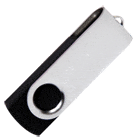
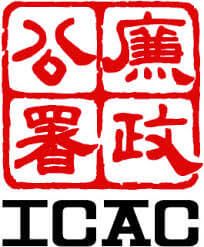

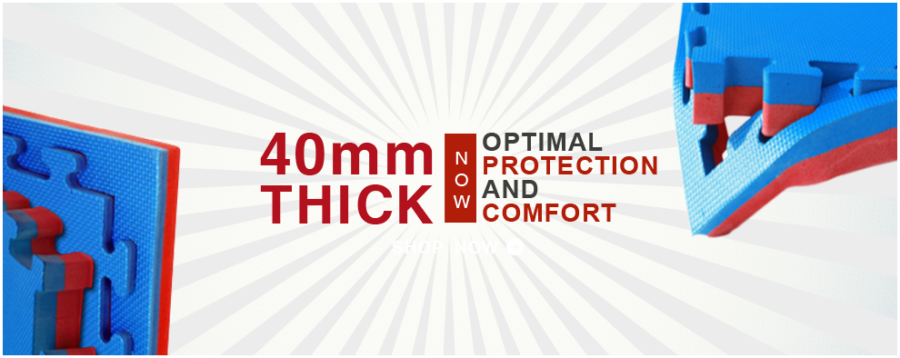
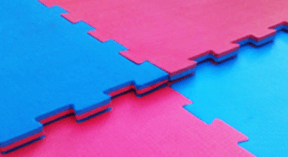
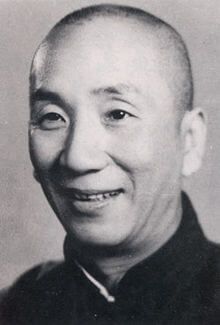
Follow us:


